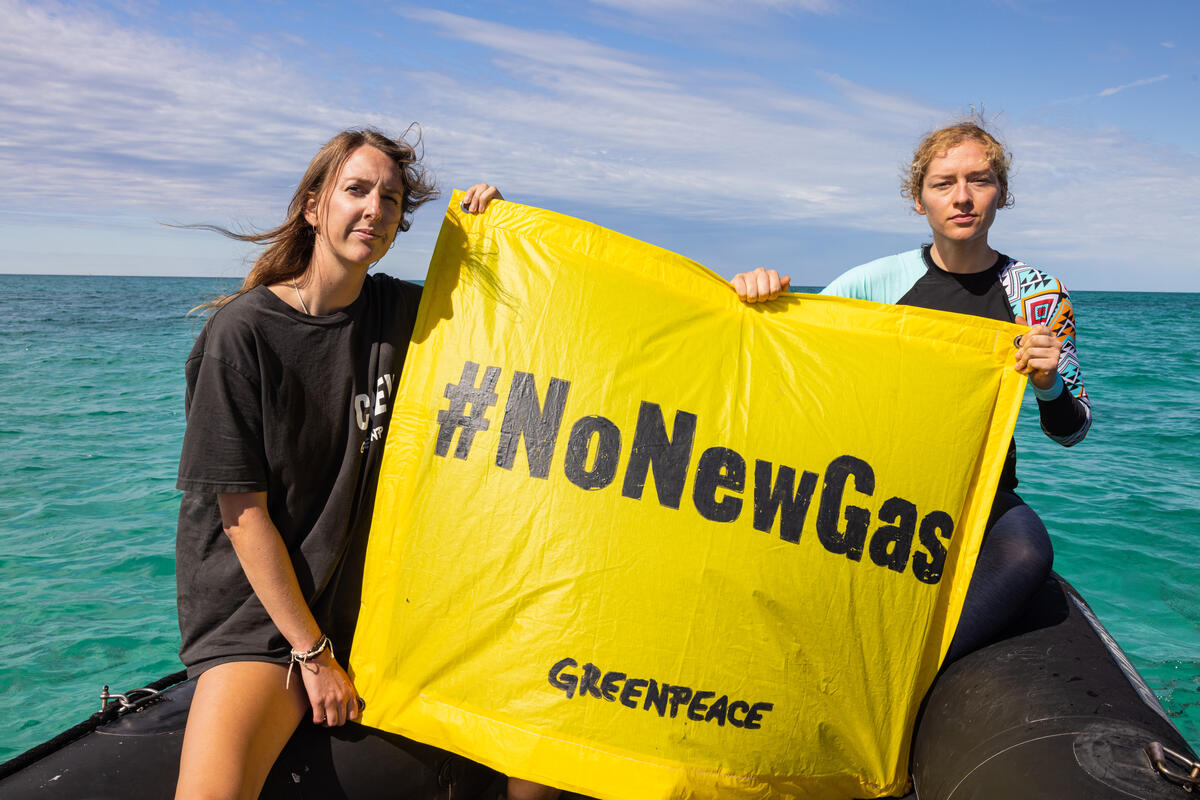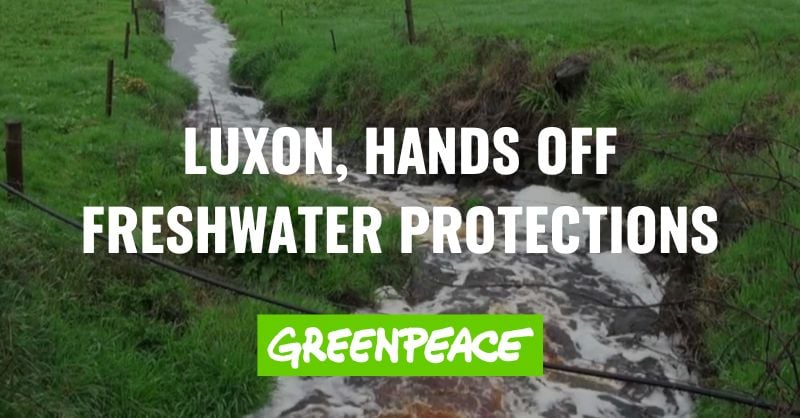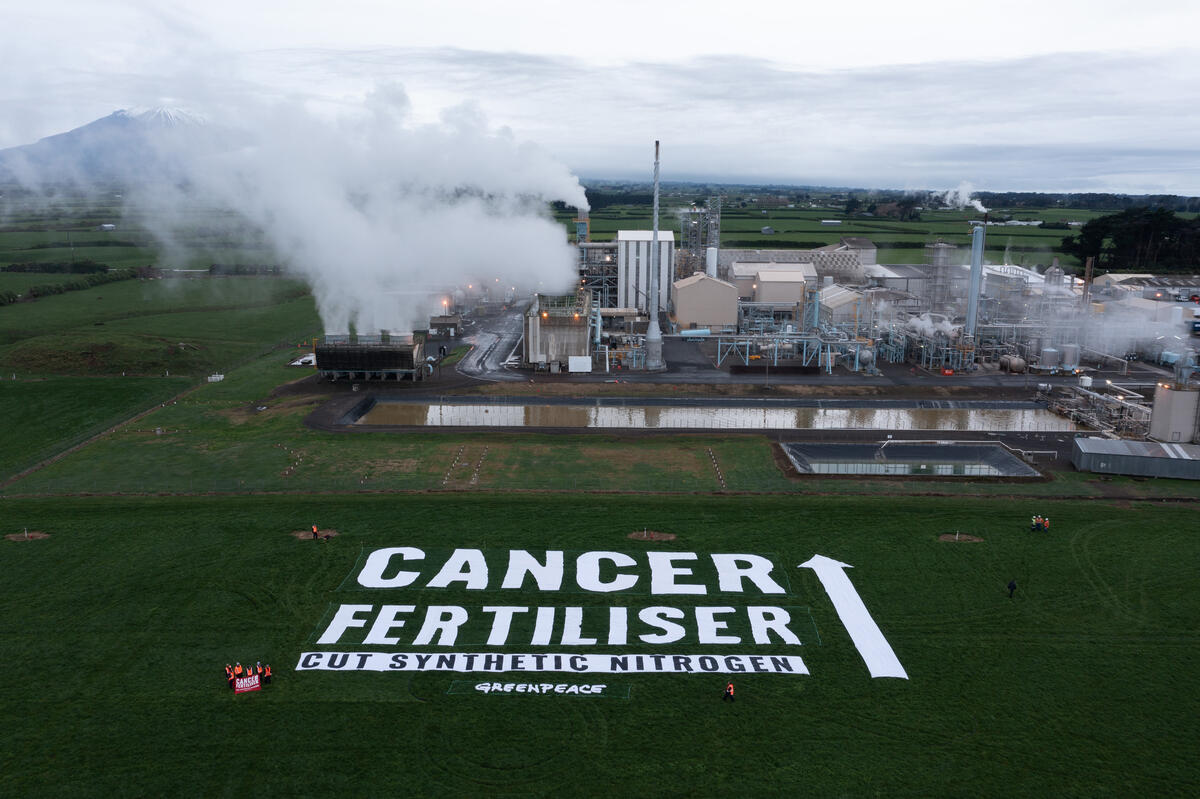Newly published research has found that every litre of dairy milk produced in Canterbury requires up to 11,000 litres of water to dilute the pollution from its production.
“The grey water footprint of milk due to nitrate leaching from dairy farms in Canterbury, New Zealand,” published in the Australasian Journal of Environmental Management, also finds that there are not sufficient volumes of rain and river water to dilute nitrate pollution in Canterbury to acceptable drinking standards. Therefore, Canterbury groundwater drinking supplies are on a trajectory to extreme levels of nitrate contamination of 21 mg/L – nearly double the allowable value for drinking water of 11.3mg/L – rendering much of it “undrinkable.”
The research states:
“Dairy farming will result in steady state nitrate concentrations on average of 21.3 mg/L (NO3-N) in groundwater originating from dairy farming areas in Canterbury, rendering much of it undrinkable. The groundwater drinking water supply of Christchurch, the second largest city in New Zealand, will also become significantly polluted with nitrate from dairy farming in the Waimakariri River catchment.”
Already 8% of groundwater wells monitored by Environment Canterbury exceed the drinking water standard for nitrate, and 68% of wells have worsening contamination. Nitrate in drinking water is linked to Blue Baby Syndrome, preterm birth and colorectal cancer. Rural communities on household bore supplies are most at risk from nitrate in water.
Lead author, Dr Mike Joy, says “Growing use of synthetic nitrogen fertiliser and imported feed such as Palm Kernel Expeller has dramatically increased nitrate levels and the water pollution problems New Zealand faces.”
“There isn’t enough water falling from the sky or pouring down Canterbury’s rivers to actually dilute the nitrate contamination produced by thousands of tonnes of synthetic nitrogen fertiliser and over a million dairy cows across the plains,” says Joy.
“The large footprint for milk in Canterbury indicates just how far the capacity of the environment has been overshot. To maintain that level of production and have healthy water would require either 12 times more rainfall in the region or a 12-fold reduction in cows.”
The research concludes that:
“Very large reductions of nutrient leaching of the order of 96 per cent are needed to reduce elevated groundwater nitrate concentrations…Unless this environmental degradation is reversed and current dairy farming significantly reduced and/or replaced by low-nitrate emission non-pasture grazed systems, dairy farming on the Canterbury Plains will remain unsustainable and seriously damaging to the local freshwater environment, including local drinking water sources. This degradation could continue to pose a significant human health risk and threat to our global market for dairy products.”
Greenpeace Senior Campaigner Steve Abel says, “This research starkly shows the need to phase out synthetic nitrogen fertiliser and reduce stocking rates if we are to protect people’s drinking water.”
“The harm done by dairy production is far reaching. Not only is the industry our worst climate polluter and cause of river degradation, but it is rendering groundwater drinking supplies – which 40% of New Zealanders rely on – undrinkable.”
Greenpeace is calling on Associate Environment Minister Kiritapu Allan, responsible for proposed regulations to protect sources of drinking water, to stop nitrate contamination at source.
“Access to safe drinking water is a basic human right – yet for an increasing number of New Zealanders this right is being denied,” says Abel.
“In light of the overwhelming evidence that synthetic nitrogen fertiliser and too many cows are a critical risk to safe drinking water, Associate Minister Allan must put in place catchment-wide stocking limits and a sinking cap on synthetic nitrogen fertiliser use to stem the tide of nitrate leached from fertiliser and cow urine from entering our drinking water.”

Call on the Government to lower the limit for nitrates in drinking water to safe levels
Take Action



